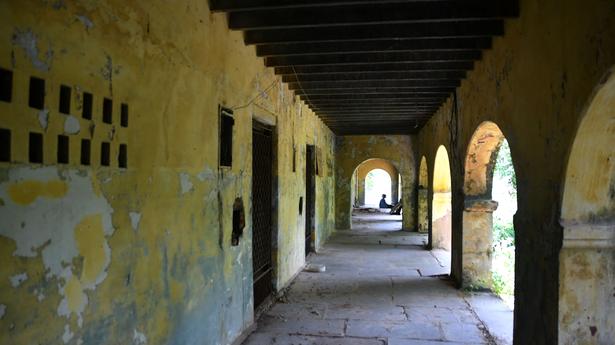
Remnants of the past at Institute of Mental Health
The Hindu
From solitary confinement to supported employment, treatment methods has come a long way at IMH
The 228-year-old Institute of Mental Health (IMH), which has come a long way in the treatment and rehabilitation of the mentally ill, still has some physical remnants of its distant past, where clearly different ideas governed treatment. A row of single cells where patients were kept in solitary confinement, several decades ago is among the many old structures that the institute still holds on to.
In the midst of thick vegetation stands a block comprising 11 high-ceiling rooms — solitary cells. Although now these rooms are nothing more than storage spaces, they stand testimony to a “different” past.
“Near this block is a bust of French physician Philippe Pinel, who pioneered humane treatment for the mentally ill. He was of the view that patients should not be restrained. The bust was made by senior psychiatrist Rudran during his tenure at IMH,” P. Poorna Chandrika, director of IMH, said.
It was mostly violent patients who were placed in solitary confinement, she said quoting some of her predecessors. “This block was for male patients and there were two separate rooms for women patients. In some cases, patients were kept in solitary confinement before Electroconvulsive Therapy as they should not drink water for a few hours prior to the treatment. In other cases, violent patients were placed here usually for two days and up to a week. Food and water was provided in the cell,” she said.
From her conversations with senior doctors, she believed that solitary confinement ended in the late 1990s. “Solitary confinement, in itself, could cause considerable trauma to the patients. They are surrounded by nothing but walls. This is a strict no in the present. We have come a long way since then. Patients are free to walk around. They can vote. Some even live independently or take up supported employment. This was not the case several years ago,” Dr. Chandrika said.
“While treatment practices have evolved, unfortunately these images are still kept alive in the minds of people by inaccurate and stereotypical depictions that worsens stigma and fear, leading to delayed treatment seeking,” she said. The institute has a recreation hall that is used minimally owing to its fragile wooden flooring.
“ In some cases, patients were kept in solitary confinement before Electroconvulsive Therapy as they should not drink water for a few hours prior to the treatment”P. Poorna ChandrikaDirector, Institute of Mental Health











